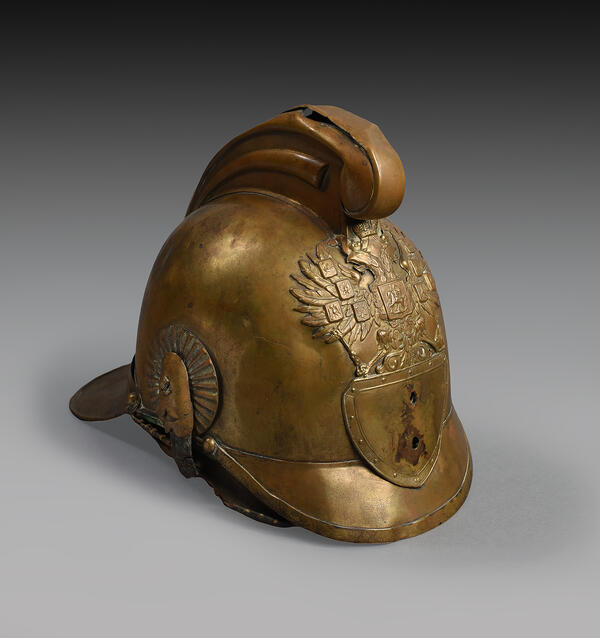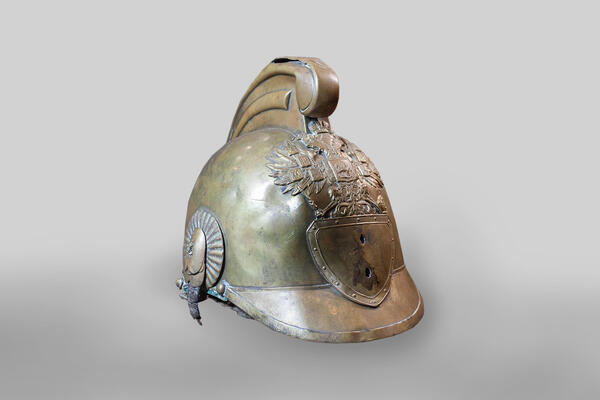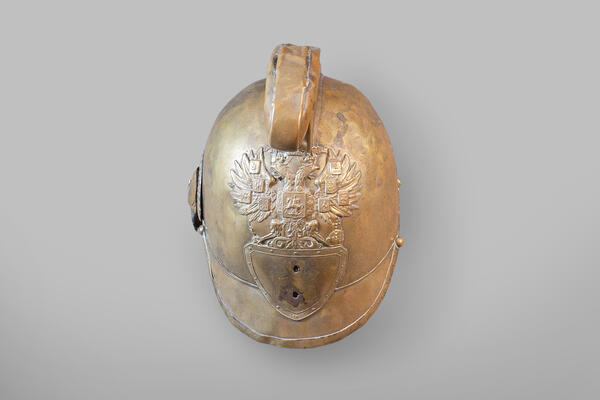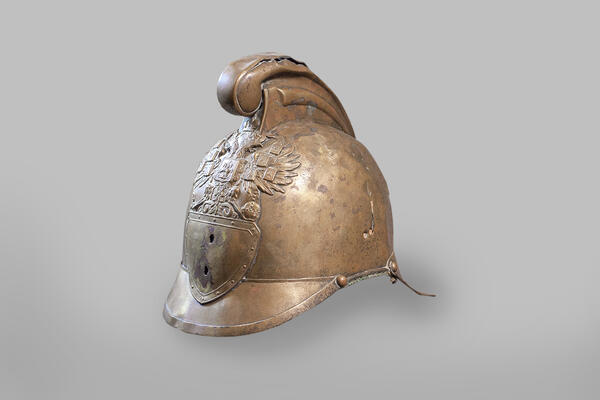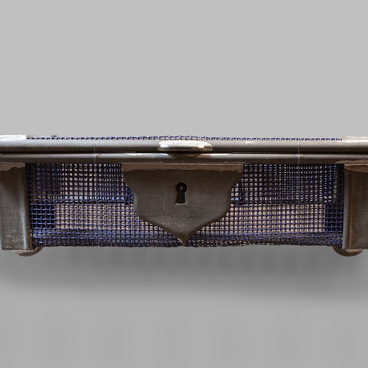The museum exhibition features an eye-catching firefighter’s helmet bearing the coat of arms of the Russian Empire, coats of arms of towns, and the emblem of the All-Russian Society of Firefighters in the form of crossed axes and a fire hose nozzle — a device that is used to direct a strong stream of water to extinguish a fire. This exhibit is distinguished by its shape, similar to the helmet of Roman legionaries, and the shining of polished brass.
In 1850, the St. Petersburg police chief commissioned a new copper helmet for the head of the city’s fire brigade, Ludwig Ertel. It was a new model with the state emblem — the double-headed eagle — in front. After that, copper helmets were sent annually to every fire department. They were decorated with the coat of arms of the respective town or city. The firemen always kept them polished to a brilliant gloss.
On December 16, 1828, Nicholas I signed a decree “On the organization of the police, fire department, income and expenses in the provincial town of Vyatka”. According to historians, this date marked the beginning of the professional fire protection service in Vyatka. After that, the voluntary fire brigade was reorganized into a professional one. Two fire departments were established at Vyatka police stations, which were headed by a fireman and two assistants. They were appointed by the chief of police. Each department had eight paid employees.
The Vyatka fire departments had primitive horse-drawn transport and very poor technical equipment: one hand sprayer and one piece of tarpaulin, two hand pumps and two foot pumps, a dozen iron hooks, and five or six canvas buckets for each response assignment. Most of the firefighters were illiterate, and even the head of the brigade had no special education.
Volunteers from among the citizens were also engaged in extinguishing fires: at the sound of the alarm bell, they were supposed to come to the fire with buckets, hooks, axes, and shovels. Those who had horses delivered barrels of water.
The first fire engine appeared in Vyatka in the early 1920s: it was called “Polundra”. In 1921, a central telephone office was equipped at the second fire station. As a result, firefighters could be informed about a fire faster and maintain communication between departments.
In 1850, the St. Petersburg police chief commissioned a new copper helmet for the head of the city’s fire brigade, Ludwig Ertel. It was a new model with the state emblem — the double-headed eagle — in front. After that, copper helmets were sent annually to every fire department. They were decorated with the coat of arms of the respective town or city. The firemen always kept them polished to a brilliant gloss.
On December 16, 1828, Nicholas I signed a decree “On the organization of the police, fire department, income and expenses in the provincial town of Vyatka”. According to historians, this date marked the beginning of the professional fire protection service in Vyatka. After that, the voluntary fire brigade was reorganized into a professional one. Two fire departments were established at Vyatka police stations, which were headed by a fireman and two assistants. They were appointed by the chief of police. Each department had eight paid employees.
The Vyatka fire departments had primitive horse-drawn transport and very poor technical equipment: one hand sprayer and one piece of tarpaulin, two hand pumps and two foot pumps, a dozen iron hooks, and five or six canvas buckets for each response assignment. Most of the firefighters were illiterate, and even the head of the brigade had no special education.
Volunteers from among the citizens were also engaged in extinguishing fires: at the sound of the alarm bell, they were supposed to come to the fire with buckets, hooks, axes, and shovels. Those who had horses delivered barrels of water.
The first fire engine appeared in Vyatka in the early 1920s: it was called “Polundra”. In 1921, a central telephone office was equipped at the second fire station. As a result, firefighters could be informed about a fire faster and maintain communication between departments.


